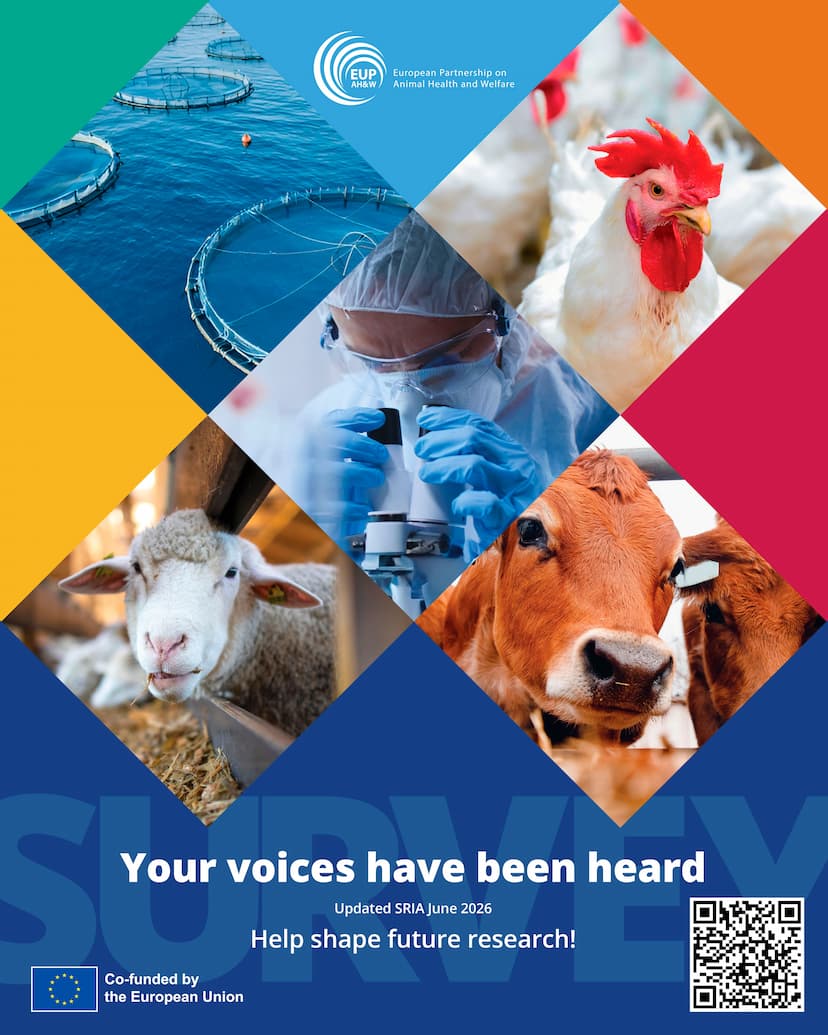SRIA

The EUP AH&W’s Strategic Research and Innovation Agenda (SRIA) has been developed through joint working of the EUP AH&W, WP6 – ERA-Net co-fund ICRAD, STAR-IDAZ IRC and SFU - CWG AHW through extensive consultation with a broad range of players.
The SRIA describes the long-term strategic vision of the Partnership, including the broad research themes that will guide the Partnership’s activities over the coming years. It is a live document and needs to reflect the needs of the communities that it represents.
In order to reflect changes in the requirements and needs of the communities involved, WP2 requested that interested parties complete a survey to capture their current views and beliefs as to the priorities and focus of the next stage within the EUP AH&W grant. The survey addressed each of the nine Operational Objectives in the current SRIA, the associated 51 Actions considering their relevance, whether they should be refined and if new ones should be added.
The updated SRIA will be announced in summer 2026 here once consultations have been finalised.
The survey has been closed now, but if you still want to provide comments, please use the box below.
If you have any comment about the SRIA, please contact the WP2 team.
The vision

The vision of the EU Partnership on Animal Health and Welfare (designated by the abbreviation EUP AH&W or its acronym EUPAHW) is to provide society with sustainable livestock, poultry and aquaculture production. Infectious animal diseases are optimally prevented and controlled with appropriate means, antimicrobials are used prudently, and animal welfare is respected in every phase of the production cycle. This will be achieved through strengthened cooperation between public research and innovation entities in the domains of animal health and welfare, and collaboration with various partners, including relevant authorities, animal health industries and other stakeholders such as Non-Governmental Organisations (NGOs).
Due to the close link between animal health, animal welfare and human well-being, the One Health-One Welfare perspective will take a prominent position in the EUP AH&W.
The ambition

The ambition of EUP AH&W is to build a strong Research and Innovation (R&I) framework strengthening Europe’s capacity to act on a preventive approach and raise healthy animals in sustainable systems, that support high levels of animal welfare. It will bring together scientists, veterinarians, authorities and funders active in the sectors of, among others, animal health, animal welfare, public health, food safety, economic sustainability and the environment. The partnership will encompass many areas, such as farm management; animal based (welfare) measures; livestock, poultry and aquaculture resilience; zoonoses; vector-borne, food-borne pathogens and emerging diseases at primary production; and other issues such as antimicrobial resistance (AMR).
